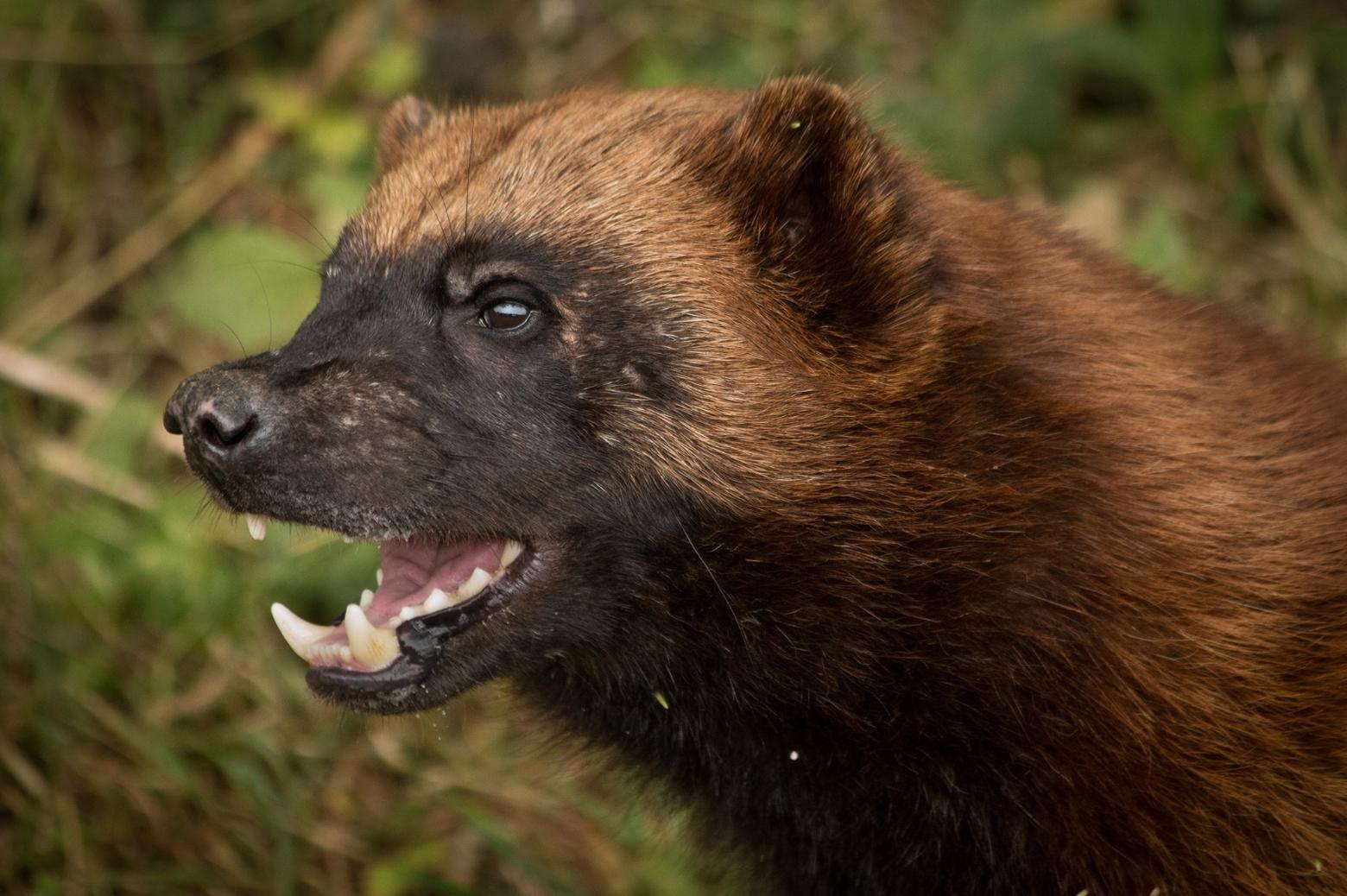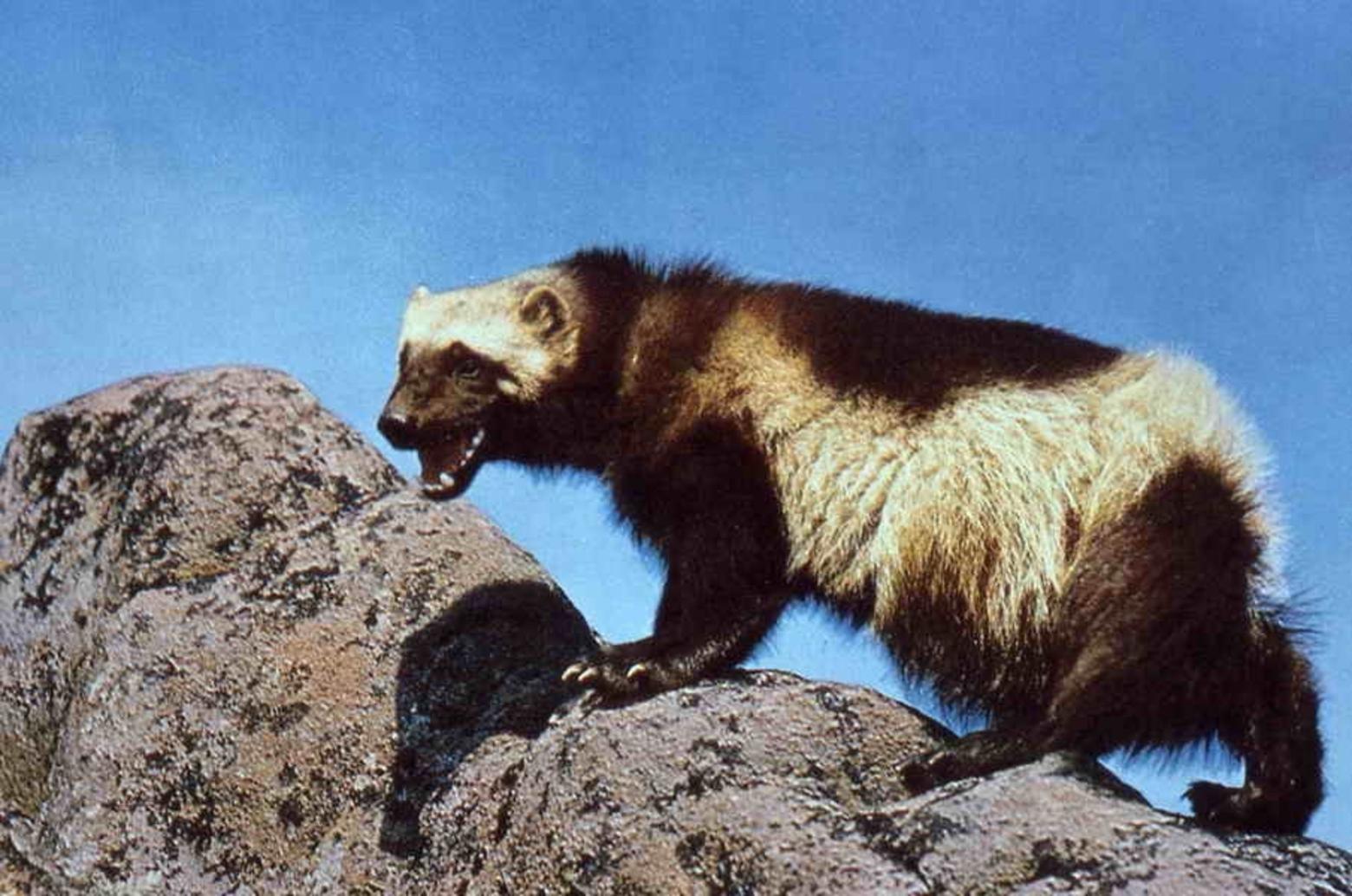Back to StoriesWolverines As A Litmus Test On Human Values
February 21, 2018
Wolverines As A Litmus Test On Human ValuesWhether these charismatic animals persist first requires an honest reflection on our own biases
Here’s a confession: I got involved with wolverine work to
escape the controversies of the wolf debate.
Back in 2006, I came out West initially to do my master’s
research on the social and biological consequences of the wolf reintroduction a
decade earlier. After an unsettling summer of interviewing people on all sides
of the wolf debate, I went searching for a species that would keep me well away
from toxic discourses that had more to do with identity politics and value
conflicts than with the animal itself.
Wolverines were ideal – they lived in the cold, high places
I loved, and most Americans didn’t even know what a wolverine was. No one had
invested their identity—and ego— in wolverines the way they had in wolves. No
one cared about wolverine policy except for a tiny group of wolverine
biologists and a few dedicated wolverine fans. I could count this entire cadre
of people on my fingers.
When I came West
permanently in 2008, it was with the intention of focusing on Gulo gulo and staying firmly away from Homo sapiens.
Twelve years later, observing the fifth iteration of
proposed listing for wolverines under the Endangered Species Act, my optimistic
naïveté in trying to evade the West’s conflicts over wildlife policy makes me
laugh.
There’s no way to escape these dynamics when you work on
carnivores. Despite the best efforts of a group of wolverine researchers who
saw this coming, none of us could prevent the species from being co-opted into
the heated pre-existing discourse around western wildlife.
With a new listing decision due out before the end of 2018,
and the recent publication of a report suggesting that wolverines are sensitive
to disturbance by recreation, wolverines are firmly in the zone of conflict
discourse. At its root, of course, this discourse is not really about wildlife
so much as it is about competing interests trying to advance their own values
and worldviews.
Nowhere is this clearer than in the two divergent narratives
that have sprung up around wolverine
science. In this piece and several pieces to follow, I’ll consider the outlines
of these narratives, the body of science behind them, the policy implications,
and the underlying and often unacknowledged worldview and power negotiations
that propel the debate.
To understand the two wolverine narratives, we first have to
take a brief look at the history of the species, and the science, in the
Rockies. Wolverines were probably wiped out of the Lower 48 as a byproduct of
predator eradication campaigns in the early 20th century.
Highly adept scavengers with a nose for carrion, wolverines
were susceptible to poisoned bait put out for wolves and coyotes. They were
also trapped for their fur, which took an additional toll. For the past 50
years, they’ve staged a slow but steady comeback as they’ve dispersed south from
Canada, repopulating the northern Rockies as far south as the Tetons, the
location of the southernmost recorded den in the US.
The earliest telemetry study of wolverines in Montana was
conducted in the 1980s. In the 1990s and 2000s, GPS and satellite collars
allowed for more refined data collection, leading to a greater understanding of
wolverine social dynamics and habitat requirements.
Genetics opened another avenue of scientific exploration,
and widespread and relatively cheap automatic cameras permitted new forms of
survey from about 2005 on. At the end of the first two decades of systematic
wolverine research, we understood that wolverines are naturally rare, highly
territorial, and extremely mobile, capable of dispersing hundreds of miles, and
of ceaselessly patrolling enormous home ranges.
The genetics also told us that as of 2009 there were
somewhere between 28 and 52 individual wolverines contributing to the genetics
of the population in the entire Rockies, with maybe 300 individuals on the
landscape in total.
The genetics told us that as of 2009 there were somewhere between 28 and 52 individual wolverines contributing to the genetics of the population in the entire Rockies, with maybe 300 individuals on the landscape in total.
Perhaps most importantly, we understood that wolverines were
tied to cold and snowy climates. In a 2010 paper drawing on telemetry and
satellite datasets from all preceding wolverine research projects worldwide, as
well as expert input from wolverine researchers around the globe, every
wolverine scientist in the world signed on to a paper showing that wolverine
distribution was constrained by availability of late spring snowpack and low
summer temperatures.
The authors proposed that the distribution pattern indicated
an obligate relationship between persistent wolverine populations and spring
snowpack, which wolverines use for denning between February and May. Obligate
means that wolverines rely on snowpack; their natural history shaped by it.
The paper left open the possibility that other mechanisms
besides denning might contribute to this global distribution pattern as well,
and specified that the pattern held true only south of 54°N latitude.
North of 54°N,
the paper stated that the strict relationship between mid-May snowpack and
wolverine distribution broke down, for reasons that are as yet unclear. This
paper, and a second one modeling decreasing spring snowpack in the Rockies over
the coming decades, were the basis for the 2013 proposed rule to list
wolverines due to risk from climate change.
These two wolverine narratives fighting for dominance in the
listing debate start in the same place – with wolverine extirpation and recolonization.
The first story, however, takes a trend from the past century and projects it
infinitely into the future. This story claims that because the wolverine
population has been expanding, both numerically and spatially, it will continue
to expand in the same way indefinitely.
Under this sceneario, which I’ll refer
to as the “Wolverines Are Fine” narrative, ecology proceeds in a linear and
relatively static fashion, without dynamic or potentially confounding factors
to disrupt patterns observed in the past. It suggests says that inaction on
potential threats is acceptable, and even goes so far as to support the renewal
of a Montana trapping season that was closed in 2012 by court order.
The second story, which I’ll call the “Wolverines are
Vulnerable” narrative, acknowledges the numerous human-related trends that are
about to collide head-on with the wolverine’s once-expanding population.
Climate change is one of those. Development and its attendant challenges,
including growing recreation pressure, is another.
This scenario suggests that we are capable of taking
precautionary action by acknowledging and attempting to mitigate threats to the
species. It also bows to the reality that ecology is a complex set of processes
with interlinked causal relationships, and trends that can reverse themselves. This
multi-variable view says that wolverines will decline in the coming decades as
we lose low summer temperatures and late spring snowpack, and that the threat
requires action.
At this point, most people would be inclined to ask which narrative
is “true.” A better question to ask is which narrative the best available
science supports. But before that, an even better preliminary question is this:
which narrative do you instinctively gravitate towards? Answer honestly.
Most people would be inclined to ask which narrative is “true.” A better question to ask is which narrative the best available science supports. But before that, an even better preliminary question is this: which narrative do you instinctively gravitate towards? Answer honestly.
Now ask yourself an equally important follow-up: Why? What
cultural factors or biases do you bring to your reading of this situation?
Where do you align your interests and values when it comes to wildlife issues? How
do you see the outcome of the wolverine decision benefiting or threatening
those values and interests?
In my attempts to dodge the human side of wildlife issues by
approaching wolverines as a question of science and research, I’ve been asked
again and again, by individuals and by organizations, to clarify what the science “really” says about wolverines.
In many cases, what people are asking for when they ask this
question is either a vindication/validation of their own pre-existing values
through the medium of expertise, or else an excuse to argue because the science
challenges their pre-existing values and they must discredit that expertise.
I intend to write more about the wolverine science here, but
before I do that, I want to invite readers who are interested in this topic to reflect
deeply about their own values, positions, and interests in this debate.
I’d like all of us to
be clear about when we’re talking about science, and when we’re talking about
advancing our interests and values, either through the medium of science, or in
spite of what the science says. If we can disentangle these things and talk about
them with awareness, wolverines might yet avoid fully becoming a casualty of
the West’s wildlife wars.





